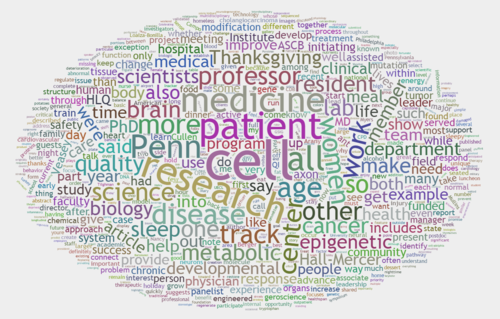I've always found one of the most fascinating aspects of social media to be its Hemingway-like quest to pack as much information into as small a space as possible. What started with Xanga and LiveJournal — two of the many longform blogging platforms us angsty teenagers of the early 2000s filled with plenty of stuff we'd just as soon pretend never happened — moved quickly into more compact platforms like MySpace and Facebook, only to seek even more cramped quarters with Twitter, the Internet standard of success through brevity. The most compelling example of Twitter's domination in this field, I think, is the "Trends" sidebar.
It's easy to look past it — and perhaps many of us do — but next time you're poking around Twitter, stop and consider how neat it is to be able to catch up with what millions upon millions are talking about around the world ... all within the five to ten seconds it takes you to read the top few trending items.
Crazy, right? And cool. But also not the sort of trending I want to talk about. For that, we've got to pull back a bit.
Trends are a huge part of medicine, and science overall. The webcomic XKCD (a personal favorite) has touched upon this by illustrating the compulsion researchers have to seek patterns or logic in things that may, on their surface, seem a little bonkers. What might look like a mish-mash of unrelated things may, in fact, tell a larger story. Let's take a look at an example:

If you just glance at it without trying to take a whole lot in, you're just seeing a ... well, a really big word egg. But look a little more closely, and things start to pop out at you: Cell. Patient. Medicine. Research. Penn. Suddenly, you're getting a much better idea of the pattern here. You're spotting a trend.
You might've figured it out already, but you're looking at a word cloud (helpfully generated by HTML5 Word Cloud) of this blog's RSS feed. The larger a word is, the more frequently it appears. Without being told what it was, though, it probably wouldn't take you too long to get the general gist of it. This cloud of seemingly random words would quickly point you in the direction of something far more specific. That's the power of a trend.
One of the projects I work on here is This Week in Penn Medicine News, a weekly video review of some of the largest or most interesting stories coming from the institution. Editing it means I'm listening to a new 1.5-minute audio clip of myself each week, over and over, while I splice photos and whatnot into the video. Each video ends with the same text: "More on these and other stories can be found in one form or another on our website. Also, be sure to check us out on Facebook and Twitter. Thanks for watching, we'll catch you next week."
It didn't take long before I picked up on yet another trend.
To date, I've put together 14 episodes of TWIPMN. I took my reading of that ending text — "More on these and other stories ..." — from each of the 14 audio files and layered them on top of one another. Here's what I got (link goes to an MP3, which should play in your browser).
Sounds like one file layered over itself and reverbed a whole bunch, right? I've read that same three lines of text very, very similarly 14 times over the span of four months. Might shake it up a bit now.
Trends can also dictate what I'll post to the Penn Medicine Facebook. If it's a powerful human interest story, that's a slam dunk. We want that out there, because we know people are going to be touched by it and share it with others. If it involves pets or animals (as in the case of the Pet a Pooch program), we want that out there, because it's the Internet and people just can't get enough of cute critters.
This is mostly just fun, of course, but as I alluded to earlier, trends are important. Enough researchers notice a trend, and after enough experimentation it just might become lifesaving medical advice. A scientist you've never seen or heard of picking up on a trend could, potentially, save your life someday.
Such is the power of the trend.